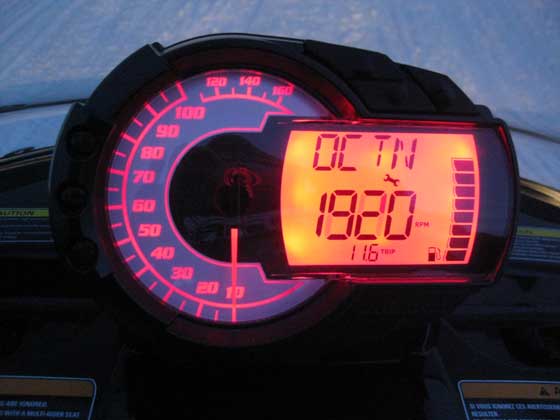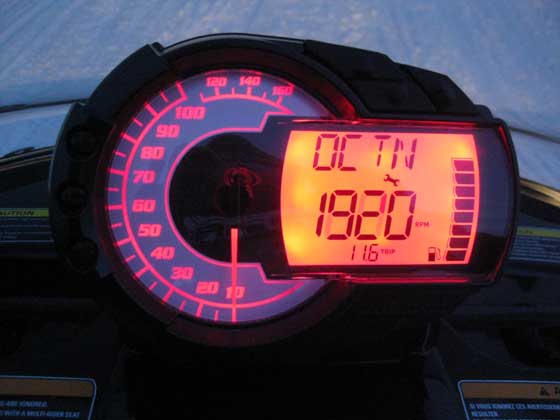
If you were one of the owners of a 2011 Arctic Cat sled equipped with the 800 H.O. engine and burned 91 octane fuel, you might have been surprised to occasionally experience “Limp Mode” (indicated with the “OCTN” code on the speedo, a 7700-rpm ceiling and extra-rich fuel/air mixture).
The situation confused more than a few riders (including me), who were certain to have used the required 91 octane fuel.
The problem wasn’t octane. It was ethanol.
When Arctic Cat calibrated the EFI system for 2011, engineers couldn’t factor some of the high concentrations of ethanol that exist in certain regions of the country. At partial throttle positions at elevations between 0 – 3,000 feet AND where there was very little load on the engine, the addition of lean fuel (because of high ethanol content) caused knock/detonation.
When the system detected detonation, it automatically retarded the engine timing. If this didn’t stop the detonation, it activated the Limp Mode, which limited rpm to 7700 and increased the amount of fuel to the mixture to prevent damage to the engine.
The engine stayed in limp mode until it was reset (whenever the engine is restarted).
The problem was, in some areas of the snowbelt, poorly-blended 91 octane fuel was the norm, and thus riders dealt with Limp Mode more frequently than what was desirable. When Arctic Cat became aware of the situation, members of the engineering team went to work on a fix.
The Fix Is In
Arctic Cat recently notified registered owners of these sleds that authorized Arctic Cat dealers can reprogram their engine ECU at no charge, to eliminate the poorly-blended/ethanol fuel-induced detonation.
Three recalibration strategies were involved to eliminate the glitch:
1. Change the fuel injection timing strategy: Not the amount of fuel, but when the injector is fired based on crank angle.
2. Recalibration (the amount of fuel and ignition timing) in partial throttle areas when the APV exhaust valve is in the down or middle-position. FYI: There are three APV valve positions.
3. A new control strategy for the Knock Sensor system.
While the prior two strategies are integral to the change, it’s this third one that does much of the heavy-lifting.
Instead of only adjusting ignition timing (one stage) like on the original calibration, the new system involves three stages: The first stage upon knock detection is to adjust ignition timing.
If this doesn’t stop detonation/knock, it moves into the second stage employing a combination of ignition timing and increased fuel (as a percentage of fuel/air mixture).
If this doesn’t prevent knock, it triggers a third stage which further retards ignition timing and adds an even greater percentage of fuel.
If this third stage doesn’t prevent detonation/knock, then it goes into Limp Mode (7770 rpm limit and even more fuel).
I’m told by Ryan Hayes, Arctic Cat Engine Development/Calibration Engineer, that engines burning ethanol-blended, 91-octane fuel will likely operate in the first two stages. He also says owners won’t be able to detect any of these automatic processes, or the minor performance differences between stage one and three.
That’s only some of the good news.
Just as important, this new calibration strategy has been incorporated into all 2012 Arctic Cat 800 models.
